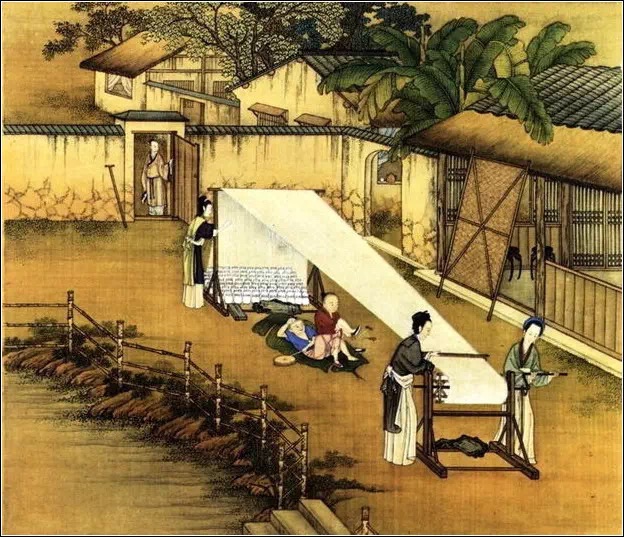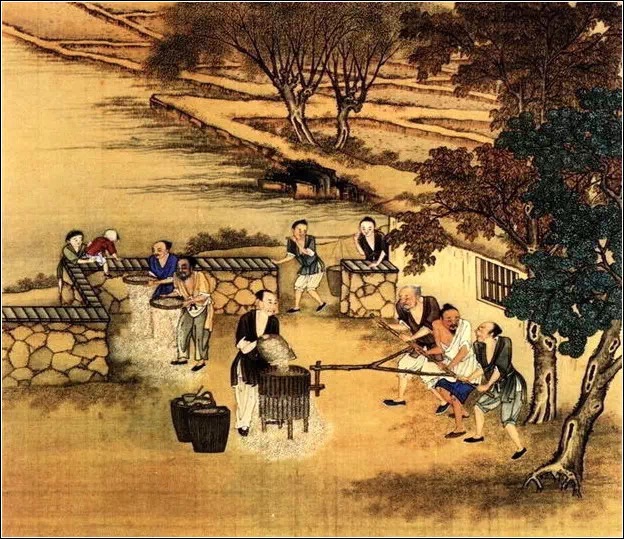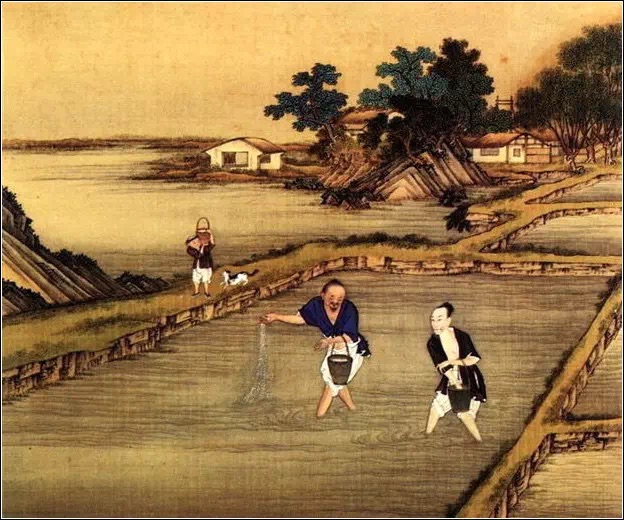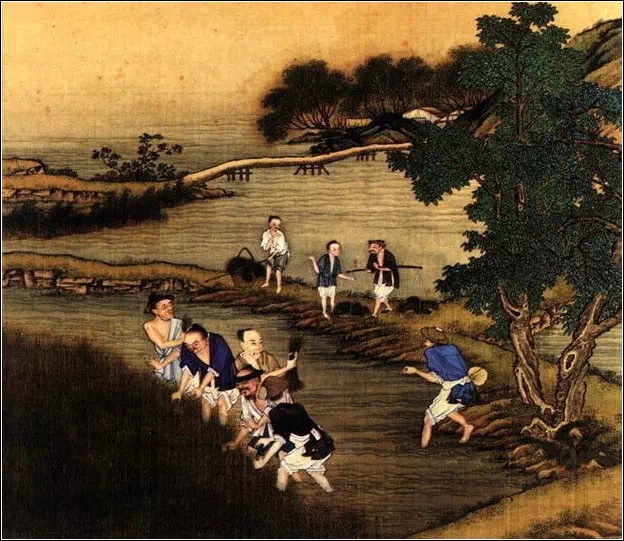Introduction and Overview
The 24 solar terms (二十四节气, èr shí sì jié qì) constitute a traditional Chinese calendar system that divides the solar year into 24 distinct periods, each approximately 15 days long, based on the sun’s position along the ecliptic. This system, rooted in ancient agricultural practices, serves as a temporal framework for aligning human activities with natural cycles, including seasonal changes, climate variations, and phenological events. Recognized by UNESCO as an Intangible Cultural Heritage of Humanity on December 1, 2016, the solar terms reflect the profound connection between Chinese culture and nature, influencing agriculture, festivals, health practices, and artistic expressions.

Historical Development
The origins of the solar terms can be traced to ancient China, with early forms emerging during the Shang Dynasty (17th century BC – 1046 BC), where four major terms were initially established, marking solstices and equinoxes. By the Zhou Dynasty (1046 – 256 BC), this expanded to eight terms, dividing the year into four seasons. The complete system of 24 solar terms was formalized during the Western Han Dynasty (206 BC – 24 AD), as documented in the Taichu Calendar of 104 BC. This development was driven by the need to synchronize agricultural activities with seasonal changes, particularly in the Yellow River region, and has since been adopted nationwide. The system spread to neighboring countries, including Korea (24 jeolgi), Vietnam, and Japan (24 sekki), illustrating its cultural diffusion across East Asia.

Historical records, such as the Book of Documents, indicate that the first determined term was Dongzhi (Winter Solstice), measured using a sundial (tǔguī, 土圭) by Dan, Duke of Zhou, to locate the geological center of the Western Zhou dynasty. This underscores the astronomical basis of the solar terms, which are spaced 15° apart along the ecliptic, with each term determined by the sun’s apparent geocentric longitude reaching integral multiples of 15°.
Structure and Classification
The 24 solar terms are divided into major (Z, 中氣) and minor (J, 節氣) terms, with major terms marking the midpoints of the month and minor terms marking the starts. The year begins with Lichun (Start of Spring, J1) and ends with Dahan (Major Cold, Z12). Each term is further subdivided into three pentads (候, hòu), resulting in 72 pentads annually, each lasting 5-6 days and named after phenological phenomena, such as the blooming of flowers or the activity of insects.

The solar terms can be categorized based on their significance:
- Seasons: Start of Spring, Start of Summer, Start of Autumn, Start of Winter, dividing the year into four 3-month seasons.
- Astronomical Events: Vernal Equinox, Autumnal Equinox, Summer Solstice, Winter Solstice, marking turning points in the sun’s altitude.
- Temperature: Minor Heat, Major Heat, Limit of Heat, Minor Cold, Major Cold, reflecting climatic shifts.
- Precipitation: Rain Water, Grain Rain, Minor Snow, Major Snow, White Dew, Cold Dew, Frost’s Descent, indicating rainfall and snowfall patterns.
- Agriculture: Small Full (Grain), Grain in Ear, Awakening of Insects, guiding planting, cultivation, and harvesting.
The dates of the solar terms are relatively fixed in the Gregorian calendar, with variations of one or two days. For instance, in the first half of the year, minor terms (J) typically fall around the 6th and major terms (Z) around the 21st, while in the second half, they occur around the 8th and 23rd, respectively. This alignment is facilitated by the “Song of Solar Terms” (节气歌/節氣歌), a mnemonic rhyme that aids memorization and provides rules of thumb for their Gregorian dates.
Detailed List of the 24 Solar Terms
Below is a comprehensive table of the 24 solar terms, including their Chinese names, ecliptic longitudes, and approximate Gregorian dates, based on data for 2025 and general.
| Solar Term | Chinese Name | Ecliptic Longitude | Approximate Date (±1 day) | Category |
|---|---|---|---|---|
| Start of Spring | Lìchūn (立春) | 315° | February 4 | Season |
| Rain Water | Yǔshuǐ (雨水) | 330° | February 19 | Precipitation |
| Awakening of Insects | Jīngzhé (惊蛰) | 345° | March 6 | Agriculture |
| Spring Equinox | Chūnfēn (春分) | 0° | March 21 | Astronomical |
| Clear and Bright | Qīngmíng (清明) | 15° | April 5 | Precipitation |
| Grain Rain | Gǔyǔ (谷雨) | 30° | April 20 | Precipitation |
| Start of Summer | Lìxià (立夏) | 45° | May 6 | Season |
| Grain Buds | Xiǎomǎn (小满) | 60° | May 21 | Agriculture |
| Grain in Ear | Mángzhǒng (芒种) | 75° | June 6 | Agriculture |
| Summer Solstice | Xiàzhì (夏至) | 90° | June 21 | Astronomical |
| Slight Heat | Xiǎoshǔ (小暑) | 105° | July 7 | Temperature |
| Great Heat | Dàshǔ (大暑) | 120° | July 23 | Temperature |
| Start of Autumn | Lìqiū (立秋) | 135° | August 8 | Season |
| Limit of Heat | Chùshǔ (处暑) | 150° | August 23 | Temperature |
| White Dew | Báilù (白露) | 165° | September 8 | Precipitation |
| Autumnal Equinox | Qiūfēn (秋分) | 180° | September 23 | Astronomical |
| Cold Dew | Hánlù (寒露) | 195° | October 8 | Precipitation |
| Frost’s Descent | Shuāngjiàng (霜降) | 210° | October 23 | Precipitation |
| Start of Winter | Lìdōng (立冬) | 225° | November 7 | Season |
| Light Snow | Xiǎoxuě (小雪) | 240° | November 22 | Precipitation |
| Heavy Snow | Dàxuě (大雪) | 255° | December 7 | Precipitation |
| Winter Solstice | Dōngzhì (冬至) | 270° | December 22 | Astronomical |
| Minor Cold | Xiǎohán (小寒) | 285° | January 6, 2026 | Temperature |
| Major Cold | Dàhán (大寒) | 300° | January 20, 2026 | Temperature |
Note: Dates are approximate and may vary by one or two days annually due to the alignment with the Gregorian calendar.
Cultural and Practical Significance
The 24 solar terms are not merely agricultural markers but are deeply integrated into Chinese cultural practices. They guide a wide range of activities, from farming to festivals and health maintenance:
- Agricultural Guidance: Each term provides specific cues for farming activities. For example, “Rain Water” (February 18-20) signals increased rainfall, ideal for planting, while “Grain in Ear” (June 5-7) marks the harvest of summer crops like wheat and the sowing of autumn crops like rice. “Awakening of Insects” (March 5-7) indicates rising temperatures, prompting farmers to sow wheat and use wormwood to repel pests.
- Festivals and Traditions: Many traditional festivals align with the solar terms. “Start of Spring” (February 3-5) coincides with the Spring Festival (Chinese New Year), involving family gatherings, fireworks, and symbolic foods like dumplings and spring rolls, with ancient practices including sacrifices for harvest and fortune. “Clear and Bright” (April 4-6) is associated with Tomb-Sweeping Day, where people clean graves and offer sacrifices to ancestors. “Winter Solstice” (December 21-22) is celebrated with family reunions, northerners eating savory dumplings and southerners sweet dumplings, symbolizing unity and the growth of yang energy.
- Health and Dietary Practices: Traditional Chinese medicine aligns health practices with the solar terms. During “Great Heat” (July 22-24), people consume cooling foods like mung bean soup or herbal teas to mitigate the summer heat, while in “Major Cold” (January 20-21, 2026), warming foods such as ginger soup or mutton stew are recommended to combat the winter chill. These practices reflect the principle of balancing yin and yang with seasonal changes.
- Cultural Expressions: The solar terms have inspired literature, art, and poetry, reflecting the beauty of nature’s cycles. The “Song of Solar Terms” is a mnemonic tool that aids memorization, with lines providing rules for Gregorian dates, such as terms occurring around the 6th and 21st in the first half of the year, and the 8th and 23rd in the second half. This cultural artifact underscores the integration of the solar terms into daily life and education.
Modern Relevance and Global Recognition
In contemporary China, while the Gregorian calendar is predominant, the 24 solar terms retain cultural and practical significance. They are used in meteorological predictions, environmental conservation efforts, and traditional medicine. Farmers, particularly in rural areas, continue to rely on these terms for agricultural planning, and urban dwellers observe them through festivals and cultural events. The UNESCO recognition in 2016 highlights their enduring value, emphasizing their role in preserving ancient traditions and fostering a connection with nature.
The solar terms also influence modern cultural expressions, such as educational programs and tourism, with initiatives like the Confucius Institute promoting their understanding globally. Their integration into the Gregorian calendar, with fixed dates within one or two days, ensures their relevance in a globalized world, serving as a bridge between traditional wisdom and contemporary life.




